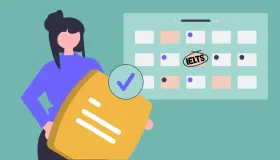Biometrics Reading Passage
Biometrics Reading Passage
A.
The word "biometrics" can be broken down into two parts - bio (life) and metrics (to measure). It is derived from the Greek word. Biometrics is a combination of technologies which measures and analyses the person's physiological and behavioral characteristics, including fingerprints, voice patterns, irises and hand measurements for identification and verification purposes. In the 14th Century, China practised biometrics in the form of fingerprinting. Merchants in China stamp their children's palms and footprints on paper to identify the specific young children from others. This way of biometric identification is still alive today.
B.
Until the late 1800s, identification was primarily based on 'photographic memory.' To overcome the difficulty of identifying convicted criminals, Alphonse Bertillon, an anthropologist and police desk clerk in Paris, created biometrics as a separate field of study. Bertillonage is a system of multiple body measurements that he invented. The idea that adult bone dimensions do not vary after the age of 20 is the foundation of his approach. He also devised a cataloguing system that made the filling and verifying records a breeze. Until 1903, when two identical measurements were recorded for two separate people at Fort Leavenworth Prison, this system was frequently used by police authorities. The Bertillonage was never used again, and the institution moved to fingerprinting. The police began to use fingerprinting, developed by Richard Edward Henry of Scotland Yard, which resembles the methods used by the Chinese for years after the failure of the Bertillonage system.
C.
Biometrics has used more than ten different methods in the past three decades. Numerous companies have been involved in the development and continue enhancing the methods using the available technology. Concern about privacy issues is increasing as the industry grows. Laws and regulations are being drafted, and standards are starting to be developed. Still, no other biometric has been used in a wide range of fingerprinting. Some are used in both legal and business areas.
D.
Identification and verification have long been done by presenting a personal document such as a driver's licence, ID card, or passport. It may require personal data such as passwords or PINs. Due to safety concerns, two or all three methods are sometimes integrated. As time goes on, we'll need more secure and precise measures. In corporate and public security systems, point-of-sale applications, and consumer electronics, biometric verification for authentication has become a commonly used system.
Biometric Reading Questions and Answers
Discover exciting and informative IELTS reading answers about Biometric






